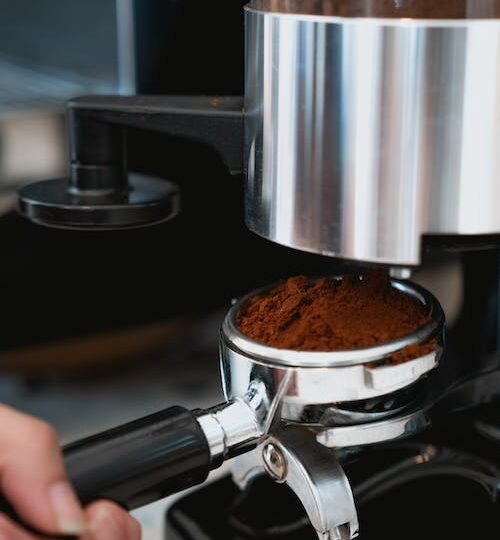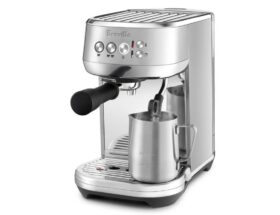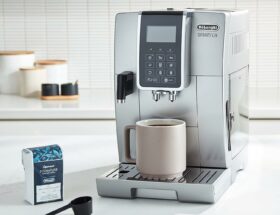
Maintaining Your Coffee Grinder: A Guide to Cleaning and Care
Welcome to our comprehensive guide on maintaining and caring for your coffee grinder. Whether you’re a coffee enthusiast or a professional barista, taking proper care of your equipment is essential to ensure the best possible flavor and extend the lifespan of your grinder. In this blog post, we’ll walk you through the step-by-step process of cleaning your coffee grinder, provide valuable tips, and highlight common grinder issues to avoid.
With regular maintenance and cleaning of your coffee grinder can significantly enhance the taste and quality of your cup of joe. Taking the time to clean and care for your coffee equipment can extend the lifespan of your grinder and prevent common issues that can affect its performance. In this guide, we’ll walk you through the step-by-step process of cleaning your coffee grinder, providing you with tips and tricks to ensure your morning brew is always top-notch.
Table of Contents
- The Tools You’ll Need
- The Cleaning Process
- Tips to Avoid Common Grinder Issues
- Step by Step Guide: Cleaning Your Coffee Grinder
- Step 1: Gather the necessary tools
- Step 2: Unplug and disassemble your grinder
- Step 3: Remove excess coffee grounds
- Step 4: Wipe down the removable parts
- Step 5: Clean the burrs
- Step 6: Reassemble your grinder
- Step 7: Run a cleaning cycle
- Step 8: Wipe down the exterior
- Step 9: Regular maintenance and care
- Step 10: Troubleshooting tips
- Wrap Up
The Tools You’ll Need
Before we dive into the cleaning process, let’s gather the tools necessary to clean your coffee grinder effectively:
- Soft brush or toothbrush
- Dry cloth
- Rice or grinder cleaning pellets
- Dish soap (mild and non-abrasive)
- Water
Coffee grinders have an ancient history, with the earliest evidence tracing back to 15th-century Yemen, where beans were crushed using mortar and pestle. In the 17th century, mechanical grinders debuted, revolutionizing the process. Now, an array of grinder types and styles exist, all pivotal in crafting the ideal cup of coffee.
The Cleaning Process
Now that you have your tools ready, here’s how you can clean your coffee grinder:
- Unplug your grinder from the power source and remove the hopper and coffee beans.
- Using a soft brush or toothbrush, gently remove any visible coffee residues from the hopper, upper burrs, and inside the grinder chute.
- Wipe the external surfaces of your grinder with a dry cloth to remove any accumulated dirt or moisture. Be careful not to use any abrasive cleaners that may damage the finish.
- (Optional) If you notice oil buildup on the burrs, consider grinding a handful of uncooked rice or grinder cleaning pellets to absorb the oils. This will help maintain the freshness and flavor of your coffee.
- To eliminate any residual oils or coffee grounds, disassemble the burrs according to your grinder’s user manual, if possible. Soak them in warm water mixed with a small amount of mild dish soap for a few minutes.
- Gently scrub the burrs with the soft brush or toothbrush to remove any remaining particles or oils. Rinse them thoroughly with water and pat them dry.
- Reassemble your grinder and wipe it down once again. Ensure that all parts are completely dry before using it to prevent moisture-related issues.
Tips to Avoid Common Grinder Issues
To keep your coffee grinder in optimal condition for years to come, keep these maintenance tips in mind:
- Clean your grinder regularly, ideally once a month or after every 30-40 pounds of coffee beans.
- Avoid using water directly on the grinder’s motor or electrical components as it can damage the internal circuitry. Stick to dry-cleaning methods instead.
- Grind only as much coffee as you need for each brewing session to prevent overloading the grinder.
- Store coffee beans in airtight containers away from direct sunlight, heat, and moisture to preserve their freshness and avoid clogging your grinder.
By following these cleaning and maintenance practices, you'll not only enhance the flavor of your coffee but also prolong the lifespan of your grinder. Remember, a well-maintained coffee grinder is the secret to a consistently delicious cup of coffee.
Step by Step Guide: Cleaning Your Coffee Grinder
Step 1: Gather the necessary tools
Before you begin cleaning your coffee grinder, make sure you have the following tools ready:
- Soft, dry brush or toothbrush
- Microfiber cloth or towel
- Cotton swabs
- Dish soap or coffee grinder cleaner
- Water
Step 2: Unplug and disassemble your grinder
Start by unplugging your coffee grinder from the power source for safety. Next, disassemble the grinder according to the manufacturer’s instructions. Remove any removable parts such as the hopper, burrs, and grind chamber.
Step 3: Remove excess coffee grounds
Using a soft brush or toothbrush, gently brush off any excess coffee grounds from the different parts of your grinder. Pay particular attention to the burrs, as accumulated grounds can affect the quality of your grind.
Step 4: Wipe down the removable parts
Take a damp microfiber cloth or towel and wipe down the removable parts of your grinder. Use a bit of dish soap or coffee grinder cleaner if needed. Avoid immersing the parts in water unless specified by the manufacturer.
Step 5: Clean the burrs
To clean the burrs, use a soft brush or cotton swab to remove any stubborn coffee residue. Be gentle and take care not to damage the burrs. If necessary, refer to your grinder’s manual for specific cleaning instructions.
Step 6: Reassemble your grinder
Once all the parts are clean and dry, reassemble your coffee grinder carefully. Make sure everything is properly aligned and securely fitted to ensure optimal performance.
Step 7: Run a cleaning cycle
Plug in your grinder and run a cleaning cycle by grinding a small amount of uncooked rice or coffee grinder cleaning pellets. This will help remove any remaining oils or particles that might affect the flavor of your coffee.
Step 8: Wipe down the exterior
Take a damp cloth and wipe down the exterior of your grinder, removing any dust or residue. Pay attention to any buttons, dials, or screens that may need cleaning.
Step 9: Regular maintenance and care
Maintain the cleanliness of your coffee grinder by regularly wiping it down, removing excess coffee grounds, and running cleaning cycles every few weeks. This will extend the lifespan of your grinder and ensure optimal performance for years to come.
Step 10: Troubleshooting tips
If you encounter any issues with your grinder, such as inconsistent grind size or unusual noises, refer to the manufacturer’s troubleshooting guide or seek professional assistance if needed.
Remember, regular cleaning and maintenance will not only improve the taste of your coffee but also prolong the life of your beloved coffee grinder. By following these simple steps, you can ensure that your grinder continues to produce fresh and flavorful coffee for a long time.
Remember to clean your grinder regularly, remove any stuck coffee grounds, and lubricate the burrs if necessary. It's also important to avoid common issues such as moisture buildup and using oily beans. By taking these simple steps, you can ensure that your coffee grinder continues to perform at its best.
Wrap Up
Regular maintenance and cleaning of your coffee grinder are essential for ensuring a great tasting coffee and extending the lifespan of your equipment. By following the step-by-step guide we’ve provided, you’ll have all the tools and knowledge you need to keep your grinder in top condition.
We hope you found this guide helpful! If you have any questions or additional tips on coffee grinder maintenance, we’d love to hear from you. Leave a comment below and share your thoughts.









